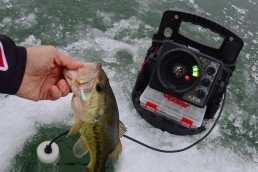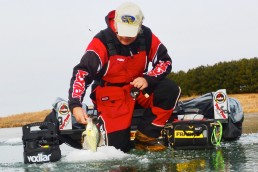Midwinter Reminder: It’s Not Just Ice Fishing Season
SHARE THIS POST
As someone who spends countless hours on the water every year, I’ll be the first to admit that I have somewhat of a one-track mind when it comes to fishing. And as a result, I’m completely guilty of forgetting how fortunate we are in the northern part of the state when it comes to outdoor recreational opportunities, especially after the snow flies.
My normal thought process is this: Open-water season ends as the ramps freeze; prepare for ice season while waiting for safe ice; hard-water season arrives; hard-water season ends as the ice deteriorates; and prepare for open-water season while waiting for open water.
I do realize that not everyone in Minnesota fishes, and even less fish the ice season (although after recently finishing up the 23rd Saint Paul Ice Fishing Show, I sometimes wonder). So do the non-fishermen either spend winter indoors and complain about winter, or go someplace warm and giggle at those left here to suffer in their winter dungeons? My ice fishing travels from lake to lake and the tracks in the snow have been telling me otherwise.
It’s no secret that with long winters, ample snowfall, and thousands of miles of groomed trails, that northern Minnesota is a popular snowmobiling destination. Anyone who drives the highway before a snowy winter weekend can’t help but notice the trailers of snow machines heading north. Additionally, the beauty and remoteness of the Superior National Forest—and the hills in and around the Laurentian Divide—provide beautiful and challenging opportunities for cross-country skiers with nearly 300 miles of maintained ski trails, even including some lighted trails for night skiing. I think most people realize that these winter activities are pretty popular up north, but several other lesser-known winter gems exist that you may not be as familiar with.
If you’re like me, when you think of snowshoes, you think of those giant wood and rawhide monstrosities that you would see worn by an Alaskan trapper from years gone by. Well, snowshoes have evolved quite a bit, and are now constructed of lighter, yet durable materials, which allow more compact variations, but excellent flotation. Hunters, backpackers, hikers, runners, and other fitness enthusiasts often turn to snowshoes in the winter months for necessity, convenience or simply variety in enjoying the winter outdoors. There are 5.5 million people in the U.S. alone who participate in snowshoeing. (All Wildlife Management Areas in Minnesota are open for snowshoeing in the winter months.)
Are you enjoying this post?
You can be among the first to get the latest info on where to go, what to use and how to use it!
No doubt camping is a traditional summer activity in Minnesota, but how about winter camping? Those last two words still make shiver whenever I hear them. I spend plenty of time standing, walking, kneeling, and sitting on the ice and snow all winter long, but sleeping on them? Brrrrrrr. You may be surprised to know that there are many individuals who look forward to this winter endeavor. On a more serious note, spending the night in the elements here in winter is not something to be taken lightly. Temperatures of 30 degrees below zero with wind chills of 50 below or more are dangerous realities, so some caution, preparation and education is required.
Sound interesting? Early in February, a one-day, seven-hour workshop will be presented at Tettegouche State Park, which will cover everything you need to know about getting started with winter camping. If you’re not familiar with the Park, it’s located about 60 miles up the North Shore of Lake Superior near Silver Bay. If you choose, you can even spend the night outdoors after the workshop using your newly acquired knowledge. Pre-registration is required; bug dope is not. Kurt Mead is the contact at the park for registration or more information.
I think it’s safe to say that most people, at least in our state, know what dogsledding is. Most probably envision a polar ice cap backdrop, transgressed by arctic explorers sporting huge frost-covered beards that would make any Duck Dynasty star proud. Truth be told, dogsledding in my part of the state is pretty common, with mushers often seen working out their dog teams with sleds as the weather cools, even before the snow flies, shaping them up for the forthcoming season. Dogsled outfitters are numerous, and offering short one-hour trips to multiday excursions, with either traditional lodging or camping.
The bottom line is that there is a lot to do in a winter up north, if you’re willing to get a little ambitious. We didn’t even touch on skijoring, winter birding, fat biking, winter kayaking or other lesser-known activities. My initial thought on these alternatives to ice fishing was: Maybe I should try one of these and take a break from fishing. Then I got to thinking about all those remote, out-of-reach lakes that I’d love to fish that can’t be accessed with a snow machine or a quad, and simply too far to hike to and fish in a day. Now armed with snowshoes, dogsleds, and winter camping, the fish don’t stand a chance.
MWO
SHARE THIS POST
Did you enjoy this post?
You can be among the first to get the latest info on where to go, what to use and how to use it!
Scott Walsh
MidWest Outdoors works with more than 200 outdoor experts each year, who contribute articles based on their areas of expertise. MidWest Outdoors magazine offers more fishing and hunting articles than any other publication!



